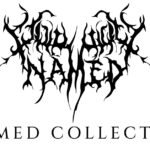Salivary gland issues, such as blockages, infections, and swelling, can be painful and affect daily life. In recent years, the sialendoscopy procedure has become a preferred treatment option for managing these conditions. This minimally invasive technique allows specialists to diagnose and treat problems within the salivary ducts without the need for major surgery.
If you are considering undergoing this procedure, understanding its risks, benefits, and recovery process is essential. Patients seeking treatment often benefit from consulting an expert in London head and neck surgery for personalised care and the best possible outcomes.
What Is a Sialendoscopy Procedure?
Sialendoscopy is a minimally invasive technique used to diagnose and treat problems in the salivary glands, such as:
- Salivary gland stones (sialolithiasis)
- Narrowing of the ducts (strictures)
- Chronic swelling or inflammation
- Recurring infections
The procedure uses a thin, flexible endoscope inserted into the salivary ducts to locate and remove stones or debris. It can also flush out blockages and widen narrowed ducts. Because no large incisions are made, the technique causes minimal tissue damage and allows for a quicker recovery compared to traditional surgery.
Benefits of the Sialendoscopy Procedure
One of the reasons sialendoscopy is becoming more popular is the range of advantages it offers patients:
1. Minimally Invasive Treatment
Unlike traditional salivary gland surgery, sialendoscopy avoids large incisions, leading to less pain, minimal scarring, and reduced downtime.
2. Effective Stone and Blockage Removal
The procedure enables direct access to the ducts, allowing precise removal of stones and clearing of obstructions without damaging surrounding tissue.
3. Faster Recovery Times
Since the treatment involves minimal trauma to the surrounding tissues, most patients can return to normal activities much sooner.
4. Preserves Salivary Gland Function
Traditional surgery often requires removing part or all of the salivary gland, but sialendoscopy focuses on restoring natural saliva flow while preserving gland function.
5. Lower Risk of Complications
With fewer incisions and less tissue disruption, patients generally face fewer risks of infection, nerve injury, and long-term complications.
For optimal results, working with a specialist experienced in London head and neck surgery ensures accurate diagnosis and advanced treatment tailored to your condition.
Potential Risks of the Procedure
While generally safe, sialendoscopy — like any medical procedure — carries some potential risks:
- Mild swelling or discomfort around the treated area
- Temporary bruising or tenderness
- In rare cases, infection at the treatment site
- Difficulty opening the mouth for a short period
- Minimal bleeding during or after the procedure
These side effects are usually temporary and improve within a few days. Choosing an experienced surgeon can significantly reduce the likelihood of complications.
Recovery After a Sialendoscopy Procedure
Most patients recover quickly after the procedure, but proper aftercare is essential to ensure smooth healing and prevent further issues.
1. Managing Discomfort
Mild swelling and tenderness are normal after treatment. Over-the-counter pain relievers or medications prescribed by your doctor can help manage discomfort effectively.
2. Staying Hydrated
Drinking plenty of water helps stimulate saliva production and flush out any residual debris, promoting faster healing.
3. Eating Soft Foods
Opt for soft, easy-to-chew foods for the first few days to avoid unnecessary strain on the salivary glands.
4. Practising Good Oral Hygiene
Rinse your mouth regularly with mild saline or antiseptic solutions as advised by your specialist. Maintaining proper oral hygiene reduces the risk of infection.
5. Attending Follow-Up Appointments
Regular check-ups allow your specialist to monitor recovery progress and address any lingering issues early.
When to Seek Medical Attention
Contact your surgeon immediately if you experience:
- Persistent or worsening pain
- Signs of infection, such as fever or increased swelling
- Heavy bleeding or drainage from the treated area
- Difficulty swallowing or opening your mouth
Prompt care from a qualified specialist ensures early intervention and better recovery outcomes.
Final Thoughts
The sialendoscopy procedure offers a safe, effective, and minimally invasive way to diagnose and treat salivary gland problems. With fewer risks, faster recovery, and a high success rate, it has become a preferred option for many patients.
For personalised treatment and expert care, consider consulting a specialist in London head and neck surgery. An experienced surgeon can guide you through the entire process — from diagnosis to recovery — ensuring the best possible results.









